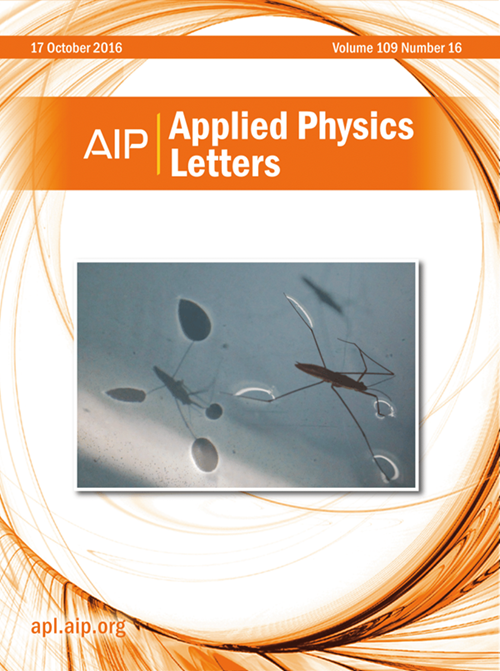Weak coupling of buckled germanene with high Fermi velocity on semiconducting Cu2Te
IF 3.5
2区 物理与天体物理
Q2 PHYSICS, APPLIED
引用次数: 0
Abstract
Despite its promise, growing a quasi-freestanding monolayer of germanene with Dirac cone signature remains a significant attention. Synthesizing germanene on semiconductor surfaces is highly desirable to preserve its linear energy dispersion near the K points, which has been experimentally challenging. Here, we report the molecular beam epitaxy of monolayer germanene on semiconducting Cu2Te supported by Cu(111). Scanning tunneling microscopy/spectroscopy (STM) revealed a low-buckled honeycomb lattice of germanene, exhibiting an intrinsic Dirac cone at the K point. By combining STM measurements with theoretical simulations, we confirm that germanene atoms occupy threefold hollow sites on Cu2Te via van der Waals interaction. Remarkably, by dI/dV spectra fitting, we find the prepared germanene owns the Fermi velocity of (6.9 ± 0.1) × 105 m/s, which is slightly higher than the density functional theory calculated 4.6 × 105 m/s with considering the dielectric constant of the underlying Cu2Te, implying the weak coupling of germanene with the substrate. This work provides a platform for further exploring the ballistic charge transport properties of germanene with a Dirac cone.半导体 Cu2Te 上具有高费米速度的降压锗烯的弱耦合
本文章由计算机程序翻译,如有差异,请以英文原文为准。
求助全文
约1分钟内获得全文
求助全文
来源期刊

Applied Physics Letters
物理-物理:应用
CiteScore
6.40
自引率
10.00%
发文量
1821
审稿时长
1.6 months
期刊介绍:
Applied Physics Letters (APL) features concise, up-to-date reports on significant new findings in applied physics. Emphasizing rapid dissemination of key data and new physical insights, APL offers prompt publication of new experimental and theoretical papers reporting applications of physics phenomena to all branches of science, engineering, and modern technology.
In addition to regular articles, the journal also publishes invited Fast Track, Perspectives, and in-depth Editorials which report on cutting-edge areas in applied physics.
APL Perspectives are forward-looking invited letters which highlight recent developments or discoveries. Emphasis is placed on very recent developments, potentially disruptive technologies, open questions and possible solutions. They also include a mini-roadmap detailing where the community should direct efforts in order for the phenomena to be viable for application and the challenges associated with meeting that performance threshold. Perspectives are characterized by personal viewpoints and opinions of recognized experts in the field.
Fast Track articles are invited original research articles that report results that are particularly novel and important or provide a significant advancement in an emerging field. Because of the urgency and scientific importance of the work, the peer review process is accelerated. If, during the review process, it becomes apparent that the paper does not meet the Fast Track criterion, it is returned to a normal track.
 求助内容:
求助内容: 应助结果提醒方式:
应助结果提醒方式:


